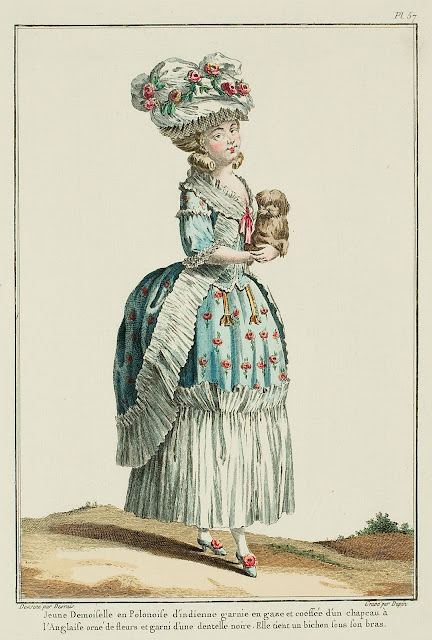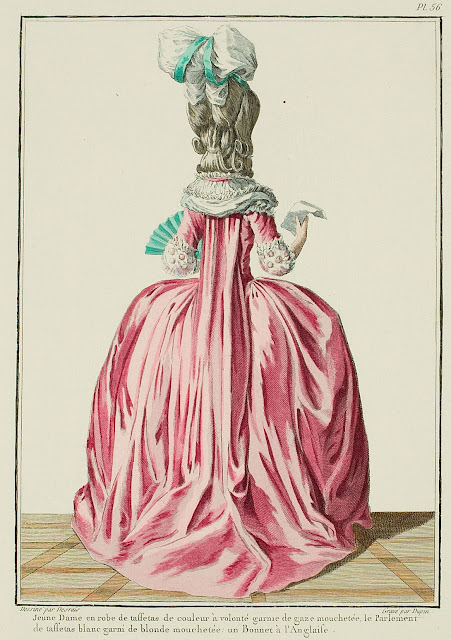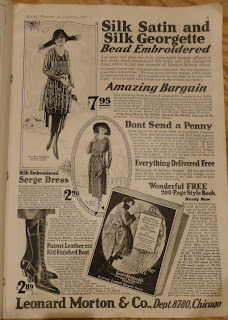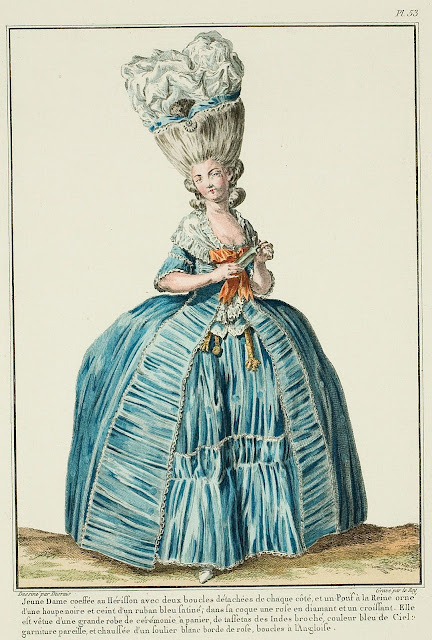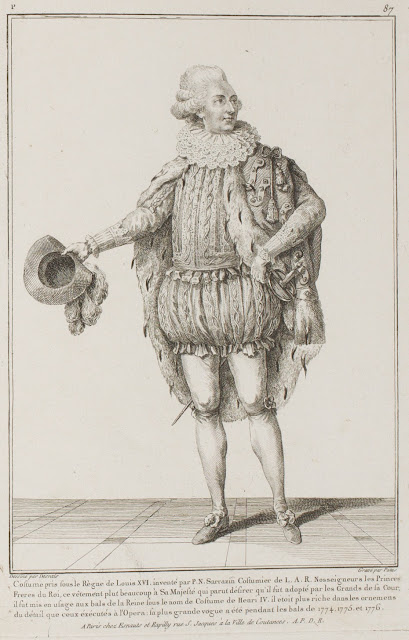Pretty Woman, coiffed with a New Peasant Cap, with an excellent caraco of apple-green taffeta, trimmed with Italian gauze, also on the petticoat. (1778) Caraco à la Francaise , seen from the side, with a matching petticoat over a very rounded bouffante . The trim of Italian gauze; the sabot cuffs very ample and frilled at their ends. Large volant equipped with a large band of gauze placed en pouf . Cap in the new peasant style, leaving the coque or tempérament entirely uncovered, from which escapes a rose held by a ribbon, the favori lying in front of the ear, and two falling curls. Shoes matching the caraco; large square buckles diminishing the size of the foot; agile heels, always of white, as any other other color is less agreeable: for the men, the red heel is a distinction of etiquette, but it is an advertisement for women. End of the First Volume APPROBATION. I have examined, by order of Monseigneur the Guard of Seals, La Galerie des Modes...



